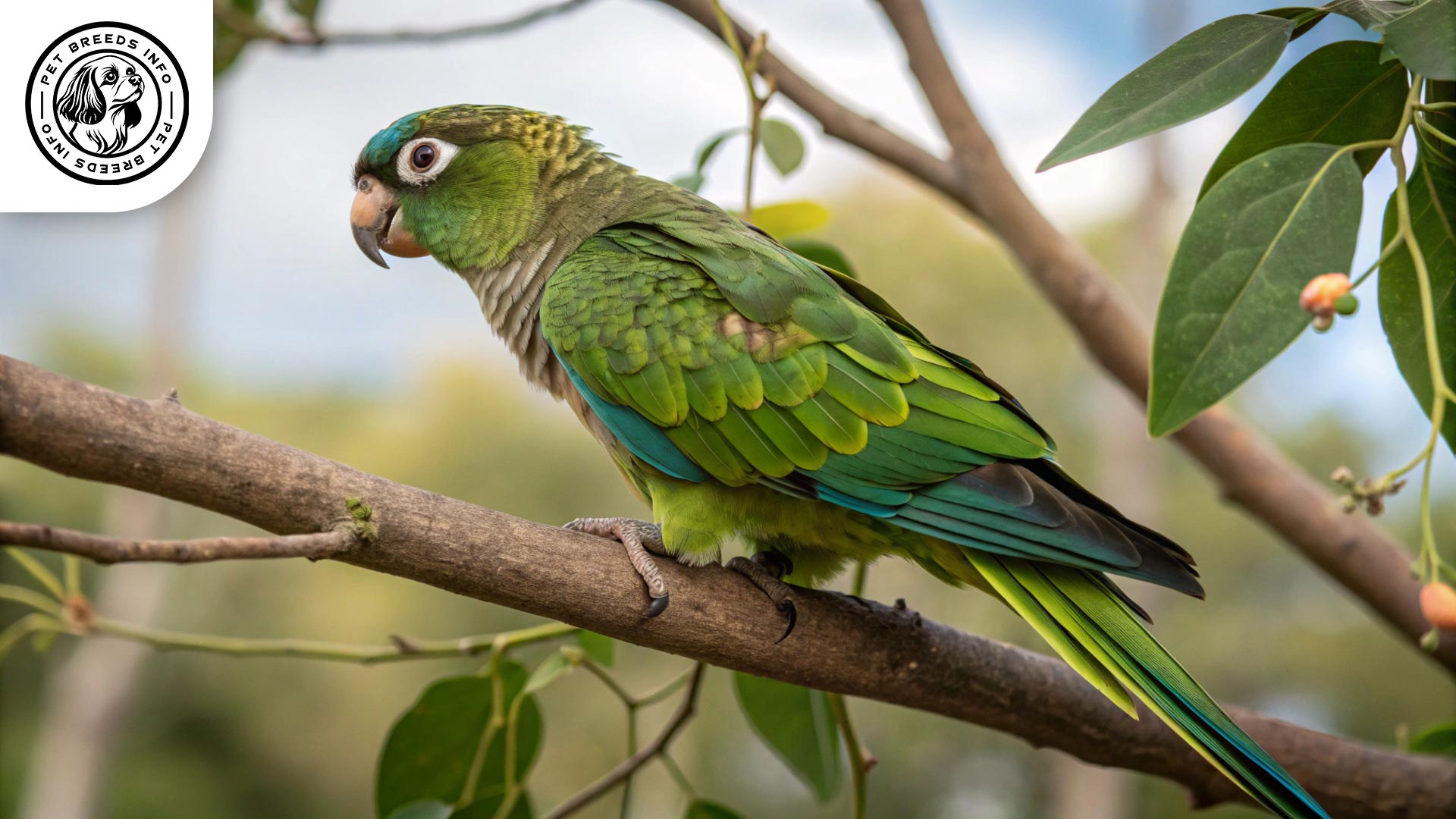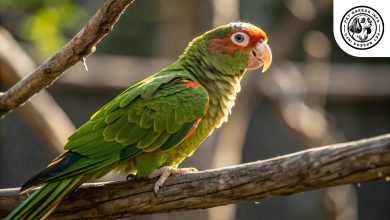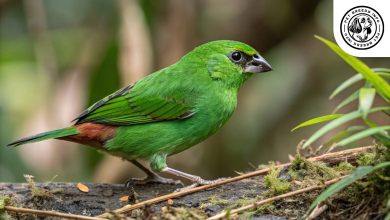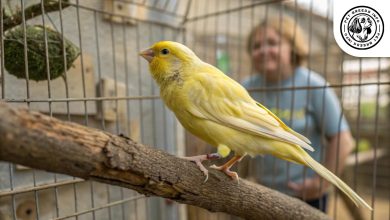Green-cheeked Conure Bird: Personality, Lifespan, Food & Care
General Introduction of the Breed
The Green-cheeked Conure (Pyrrhura molinae), also known as the Green-cheeked Parakeet, is a small parrot species native to South America. It is commonly found in the forests of Brazil, Bolivia, Argentina, and Paraguay.
This parrot species has been a popular pet for many years due to its playful nature and affectionate personality. Its popularity has grown among bird enthusiasts due to its relatively small size and lower noise level compared to other conures.
Table of Contents
| Common Name | Green-cheeked Conure, Green-cheeked Parakeet |
| Scientific Name | Pyrrhura molinae |
| Origin | South America (Brazil, Bolivia, Argentina, Paraguay) |
| Size | Approximately 10 inches (25 cm) |
| Lifespan | 10 to 25 years |
| Talking Ability | Can learn to mimic sounds and some words, but not as vocal as larger parrots |
| Colors | Predominantly green with grayish-brown head, blue-tipped wings, maroon belly and tail; color mutations include yellow-sided, cinnamon, pineapple, and turquoise |
| Noise Level | Generally quieter than other parrot species |
| Social Behavior | Highly social, thrive on human interaction, form strong bonds with owners |
Physical Characteristics
The Green-cheeked Conure is a small to medium-sized parrot with an average length of about 10 inches (25 cm) and a weight of approximately 60–80 grams.
Its feathers are predominantly green, with a grayish-brown head, blue-tipped wings, and a distinctive maroon patch on the lower belly and tail. Some color variations include mutations such as yellow-sided, cinnamon, pineapple, and turquoise.
The bird’s eyes are dark brown, surrounded by white eye rings. It has a curved black beak and zygodactyl feet, meaning two toes point forward and two point backward.
Read More: Greater Sulphur-crested
Personality and Temperament
Green-cheeked Conures are known for their intelligence and ability to learn tricks and mimic sounds, although they are not as vocal as larger parrots. They thrive on human interaction and develop a strong bond with their owners.
They are highly energetic and require regular mental and physical stimulation through play and training. Their social nature makes them great companions, but they may become nippy if not properly trained and socialized.
These birds are playful, curious, and affectionate. They enjoy spending time with their families, often seeking cuddles and head scratches.

Care and Maintenance Requirements
Green-cheeked Conures require a spacious cage with plenty of perches and toys to keep them entertained. They should be let out regularly for supervised playtime.
They are well-suited for apartments, as they are generally quieter than other parrot species. However, they still require daily social interaction to remain mentally and emotionally healthy.
Regular grooming is essential, including nail trims and occasional bathing to keep their feathers clean. Since they enjoy baths, providing a shallow water dish or mist spray helps maintain their feather health.
Diet and Nutrition
A balanced diet for a Green-cheeked Conure consists of high-quality pellets, fresh fruits, and vegetables. Seeds should be given in moderation as treats rather than a primary food source.
Foods to avoid include chocolate, caffeine, avocado, onion, garlic, and salty or sugary foods, as they can be toxic to birds.
Fresh water should always be available, and portion sizes should be moderated to avoid obesity.
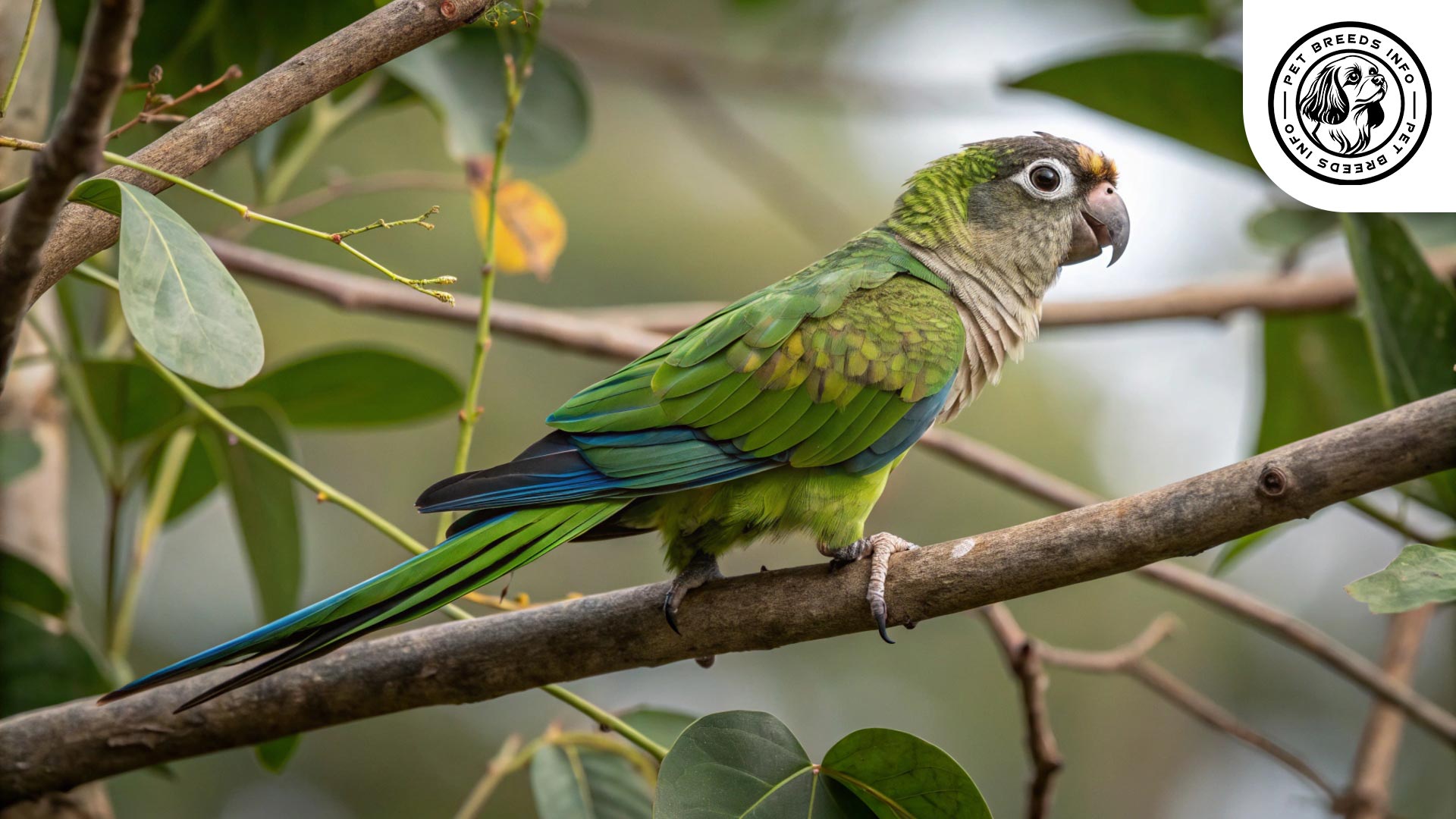
Health and Common Medical Issues
Common health issues in Green-cheeked Conures include respiratory infections, feather plucking (often due to stress or boredom), and beak or feather disorders.
They are also prone to vitamin deficiencies if not provided with a varied diet.
With proper care, Green-cheeked Conures can live between 10 to 25 years.
Read More: Grand Eclectus Bird
Training and Behavior Management
Training a Green-cheeked Conure is relatively easy due to its intelligence and strong bond with its owner. Positive reinforcement, such as treats and praise, works best when teaching tricks or commands.
Early socialization is crucial to prevent nipping tendencies and aggressive behavior. They respond well to consistent training and structured routines.
Interaction with Other Animals and Humans
Green-cheeked Conures generally get along well with their human families, including children, if handled gently and with supervision. Their playful nature makes them great companions.
They can also coexist with other birds, but introductions should be done gradually to avoid aggression.
Since they form strong bonds with their owners, they thrive in households where they receive daily attention and interaction.

Price and Availability
The cost of purchasing a Green-cheeked Conure varies based on its mutation and lineage but typically ranges between $200 to $600.
It is important to buy from reputable breeders or adopt from bird rescues to ensure a healthy bird. Always check the bird’s health and background before purchasing.
Conclusion and Final Thoughts
The Green-cheeked Conure is an excellent pet for individuals and families looking for an affectionate, playful, and intelligent bird. Though they require daily attention and social interaction, they make wonderful companions for dedicated owners.
Potential owners should consider their lifespan and social needs before committing to a Green-cheeked Conure, as they require long-term care and companionship.
If you are looking for a small parrot with a big personality and a strong bond with humans, the Green-cheeked Conure might be the perfect avian companion for you.
Read More: Albino Lovebird
FAQ
Are Green-cheeked Conures good pets?
Yes, they are known for their playful and affectionate personalities and make great companions for dedicated owners.
How big do Green-cheeked Conures get?
They are small to medium-sized parrots, averaging about 10 inches (25 cm) in length.
Are Green-cheeked Conures loud birds?
They are generally quieter than many other parrot species, making them suitable for apartments.
What do Green-cheeked Conures eat?
Their diet should consist of high-quality pellets, fresh fruits, and vegetables, with seeds given in moderation.
How long do Green-cheeked Conures live?
With proper care, they can live between 10 to 25 years.
